What are indeterminate and determinant varieties of tomatoes: differences between them, advantages and disadvantages
The terms "determinant"And" indeterminate ", indicated by manufacturers on the packaging of tomato seeds, are able to puzzle even an experienced summer resident. Progress does not stand still and at times surprises with new and unknown things.
Meanwhile, behind the unusual names and characteristics, there are concepts and processes that have long been familiar to us. We will answer the most popular questions of beginners or just curious and creative gardeners about varieties tomatoes.
The content of the article
The main differences between varieties
A description of the difference between these types of tomatoes will help you choose the variety that best suits your needs and expectations from the many varieties.
What does "determinant" and "indeterminate" mean?
All plants that have limitations in their growth are classified as determinant. In contrast, tall ones are called indeterminate.
Determinant tomatoes are tomato varieties that grow up to a maximum of 70 cm and stop growing with the formation of a fruit ovary at the end of the main shoot. Further development occurs on lateral shoots (stepchildren).
What are indeterminate tomatoes? The fruits of these crops are placed on a central stem that reaches 2-4 m in height.
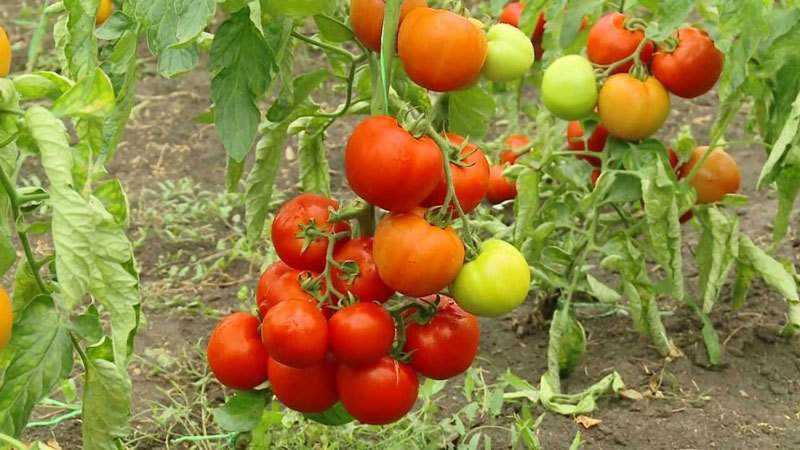
We distinguish varieties at all stages of growth
The question is relevant if seed or seedling presented to you by the friendly owner of a neighboring summer cottage and you do not know exactly which category the plants belong to.
Seeds
At the stage of choosing seeds, you will have to trust the manufacturer: the package contains the characteristics of the variety. Gardeners prefer hybrid varieties. The selection of hybrids specifically provides for a set of certain qualities. Therefore, unlike pure varieties, they are the most resistant to common diseases and adapted to growing in certain climatic conditions.
Seedlings
By the first sprouts, you can already determine which grade they belong to. The height of the stem from the root to the cotyledon of a determinate tomato is 1-2 cm, of an indeterminate one - up to 5 cm.
Mature bushes
Stem length is not the main difference between an adult plant. There are high determinant varieties intended for cultivation in greenhouses. And indeterminate standard stamps, on the contrary, are characterized by short stature.
The shape of the tomato bush will become a sure sign that determines belonging to the categories of interest to us. The formed brush at the top of the shoot and the formation of several inflorescences simultaneously indicate the determinant type of tomato. In indeterminate cultures, the ovaries are grouped around the central stem along its entire length.
Growing features
These characteristics are so important that they largely determine the fate of your future harvest.
Location in a greenhouse or garden bed
It is advisable to grow indeterminate varieties of tomatoes in a high greenhouse (up to 2 m). Having a long fruiting period, they produce crops for most of the year.
Important! Regular airing of the greenhouse will create optimal conditions for pollination and protect tomatoes from barren flowers.
Determinate and short-growing standard varieties of indeterminate tomatoes are more suitable for growing in open field.
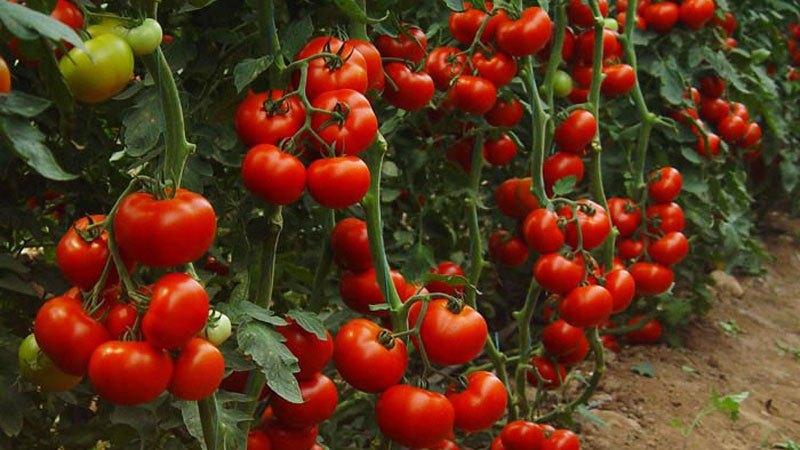
Seedling care
An error in the timing of planting and placement of seedlings on the site, ignorance of the rules for caring for them can minimize the result of your efforts.
Sowing dates
Planting tomatoes in the ground or greenhouse is preceded by growing seedlings. Seeds of indeterminate varieties are sown in early March. After 65-75 days, the seedlings are ready to move to the garden.
Determinant varieties are sown at the end of March. The seedlings ripen for 55-60 days.
Important! The optimum soil temperature for planting tomatoes is not lower than 15 ° C.
Stealing
In caring for tomatoes, it is important to promptly remove non-fruiting branches (stepchildren) from the bush, located between the base of the leaf and the main stem. This agronomic technique (pinching) is aimed at eliminating the irrational distribution of nutrients by the plant. The correct formation of the bush increases the yield.
Indeterminate varieties need pinching to a much greater extent than their undersized counterparts. Extra shoots are removed every decade throughout the growing season. The stepchildren gently break off, leaving a stump 1-2 cm high. Further, the bush is formed in one of the ways: only the central stem with fruit clusters is left, or the most developed stepson is chosen as the main one.
Important! Having chosen the stepson as the main shoot, after the formation of fruit ovaries on it, pinch the former main stem (pruning is not recommended). This will stop its further growth.
Determinant tomatoes are not prone to uncontrolled growth of green mass. For them, pinching is greatly simplified. Since the first three inflorescences bring the main crop, the process is aimed at accelerating their ripening. It is enough to remove all the stepchildren below the branch on which the ovaries have formed. The bottom two stepsons should be left, otherwise the plant will stop developing and stop fruiting. This type of bush formation is called "three-stem" and is recommended for determinate varieties.
Important! The efficiency of the process will increase if you do not allow the growth of the stepsons to be removed more than 7 cm.
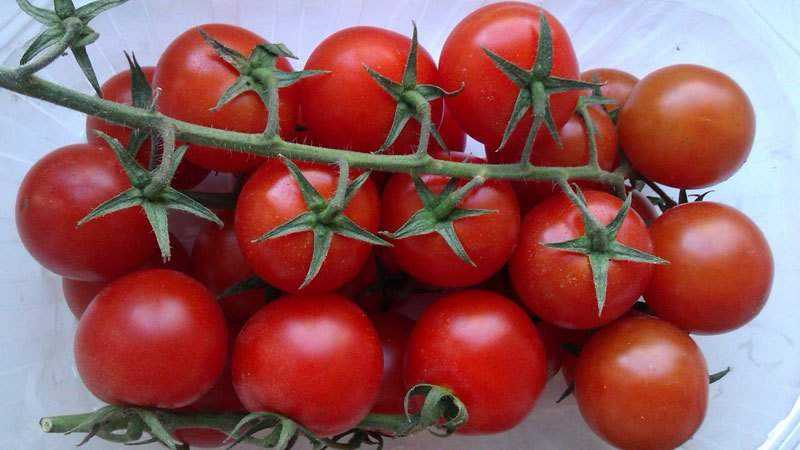
Advantages and disadvantages
The existing differences will allow you to choose and grow a variety in the most favorable conditions for it, and therefore with the greatest return.
| Indeterminate varieties | Determinant varieties | ||
| pros | Minuses | pros | Minuses |
|
1. Require regular pinching.
2. Obligatory tying of bushes. |
|
1. Fruiting once a season for 1-3 weeks.
2. Need additional feeding. |
What types of tomatoes to give preference
IN greenhouse rationally grow indeterminate varieties of tomatoes. Bushes, formed into one stem and staggered at a distance of 50 cm from each other, significantly save space in the garden. The distance between the rows must be at least 65 cm.
Determinant tomatoes, planted in open ground or greenhouses, grow into wide bushes and require space. They are placed on the garden bed at intervals of 80-90 cm.The width between the rows is at least 1 m.
Important! All types of tomatoes need to be tied up when they reach a height of 45 cm.
Reliable support will protect the plant weighed down with fruits from breakage and provide free air exchange around it. In combination with loosening and hilling, proper tying is an excellent prevention of fungal diseases in tomatoes.
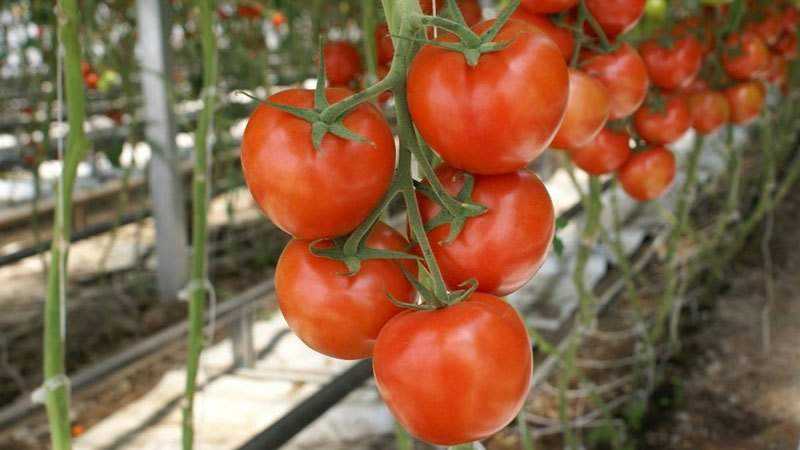
The best varieties for growing in the country
Gardeners willingly exchange experience, which allows them to collect a database of the most popular and recommended varieties of each type.
| Determinant | Indeterminate | ||
| In the open field | In the greenhouse | In the open field | In the greenhouse |
| Sanyok
Alpha Dubok Yamal Grotto Honey cream |
Alsou
Pride of Siberia Big mommy |
Watermelon
Cardinal Honey saved wild Rose Bull heart De Barao All standard grades |
Watercolor
Pink Elephant Cow heart Yellow cherry Cherokee |
The choice of the type depending on the region
Thinking about the choice of a variety, the gardener proceeds not only from his preferences in terms of the early maturity of the culture, the shape, size and taste of the fruits. It is important to correlate the quality characteristics of the variety with the climatic conditions of the growing region. A mistake in this point can have fatal consequences for the future harvest.
Indeterminate tomatoes are renowned for their yield. However, they ripen a month later than the determinant varieties. Taking this feature into account, it is necessary to decide on the placement of seedlings on the site. The warm and moderately humid climate of the southern regions of the country makes it possible to successfully grow such tomatoes both in a greenhouse and in open beds. Beyond the Urals and in central Russia, greenhouse cultivation is preferable.
In northern latitudes, standard varieties are becoming the only alternative to completely abandoning the cultivation of indeterminate tomatoes. Low-growing, with a strong thick stem, standard tomatoes are resistant to the vagaries of the weather and require minimal maintenance.
Their happy owners are freed from the tedious tasks of tying and pinching bushes. And the early ripeness of the fruits will please at the end of June. They tolerate long-term storage and transportation well.
Most of the determinant varieties are adapted to open and closed types of ground. They take root well in any climatic zones of our country. But in a short and cold summer, it is better to grow them in greenhouses.
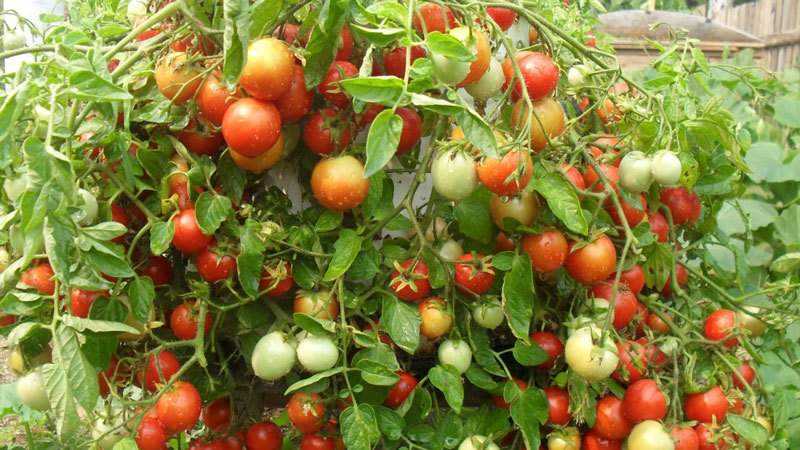
Tips for Beginners
Basic rules for caring for tomatoes:
- We decide on the grade according to the expected result. To get an early harvest, we choose determinant varieties, we want more fruits - we give preference to indeterminate ones.
- We choose a place for planting seedlings, taking into account the characteristics of the variety and the climatic conditions of your region (greenhouse or open ground).
- As they grow, we carefully pinch the indeterminate tomatoes and tie them to a support along the entire length of the stem.
- We feed tomatoes of determinant varieties in a timely manner (during the period of mass flowering, the formation of the ovary and the ripening of fruits).
- We regularly ventilate the greenhouses, maintaining the optimum temperature and humidity.
- Properly organized watering (under the root), loosening the soil and hilling will strengthen plant health and increase immunity to infectious diseases.
Conclusion
It is a matter of honor for a self-respecting summer resident or farmer to be aware of the innovations of agricultural technology and freely operate with creative terms. And for a novice gardener, this is also the safety of his harvest.
Without knowing the unique features of each variety, it is easy to turn a summer cottage into a savannah with sadly drooping rare bushes. Create comfortable conditions for your plants and get a well-deserved reward for your work!